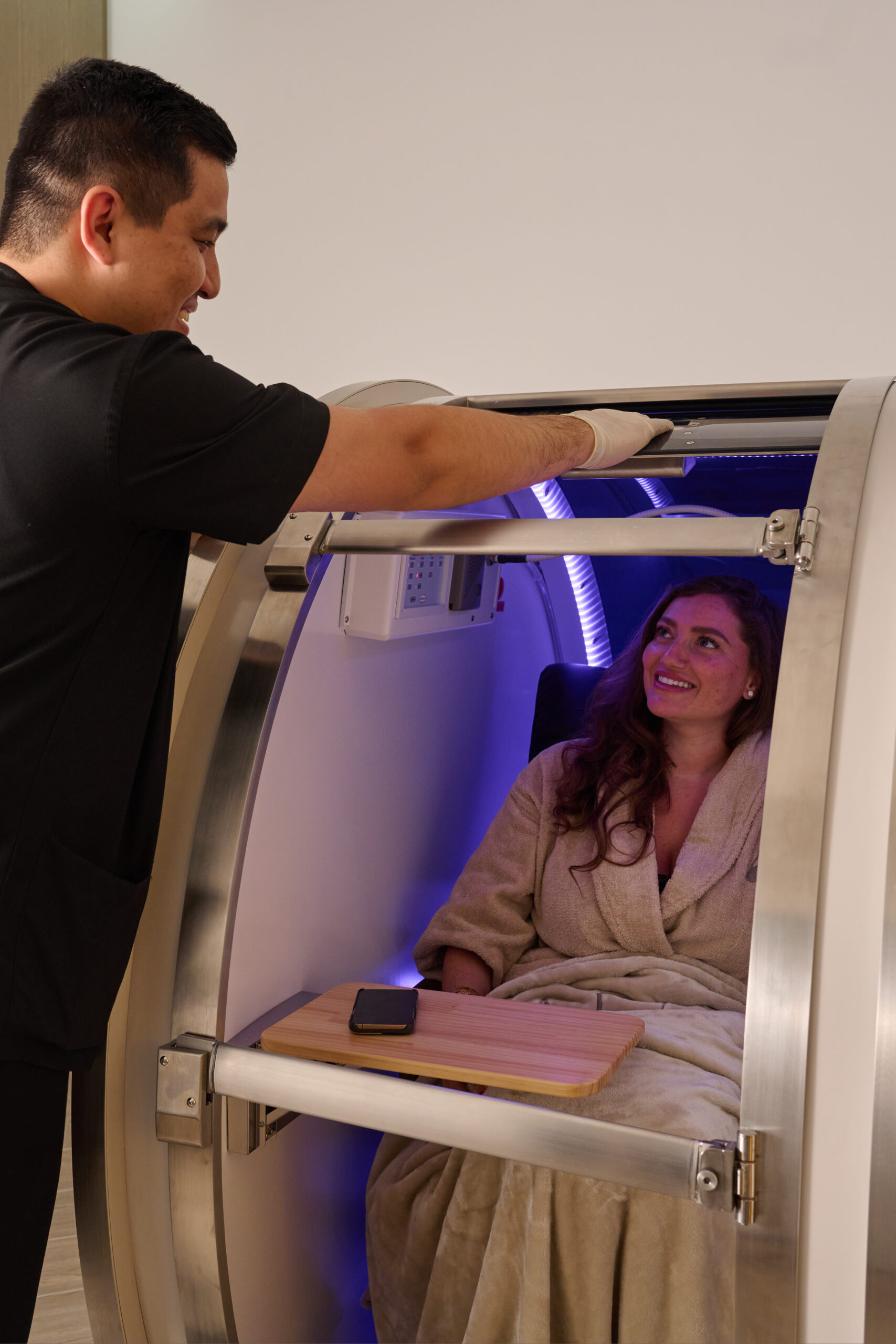Hyperbaric Oxygen Therapy Vs. Ozone Therapy: Understanding Therapeutic Technologies
Apr 10, 2024Hyperbaric Oxygen Therapy (HBOT) and Ozone Therapy offer unique approaches to healing and wellness. In this article, we delve into the intricacies of these treatments, exploring their mechanisms, applications, and differences.
Hyperbaric Oxygen Therapy
Hyperbaric oxygen therapy (HBOT) exposes individuals to highly concentrated oxygen (O2) within an environment of augmented atmospheric pressure, according to the Undersea and Hyperbaric Medical Society (UHMS).
HBOT Main Principle
The therapy’s efficacy stems from three primary factors:
Oxygen Gradient
By breathing a high oxygen concentration, a positive gradient is established, facilitating oxygen diffusion from hyperoxygenated lungs to hypoxic tissues.
Pressure-Induced Oxygen Concentration
Under high pressure, oxygen concentration in the blood increases.
Reduction of Gas Bubble Size
The hyperbaric environment with high oxygen concentration decreases the size of gas bubbles in the blood; this phenomenon aids in preventing and managing conditions associated with gas bubble formation, such as decompression sickness.
HBOT Benefits
HBOT offers the body a multitude of benefits, including:
- Correcting tissue hypoxia (oxygen deficiency within the tissues)
- Managing chronic hypoxemia (oxygen deficiency in the blood)
- Assisting in the clinical treatment of various pathological processes, such as wound healing, necrosis, and reperfusion injuries.
HBOT Applications
The applications of HBOT can be categorized into three main effects:
Wound Healing Acceleration and Angiogenesis Enhancement
HBOT promotes wound healing and enhances the formation of new blood vessels (Angiogenesis), facilitating tissue repair and regeneration.
Antimicrobial Effects
HBOT exhibits antimicrobial properties, aiding in the treatment of infections by enhancing the body’s immune response and inhibiting the growth of pathogens.
Medical Emergencies
In certain medical emergencies, such as carbon monoxide poisoning, gas embolisms, and severe cases of decompression sickness, HBOT is a crucial intervention to mitigate damage and improve patient outcomes.
Ozone Therapy
Ozone therapy is a venerable therapeutic modality boasting decades of utilization and extensive study. With proven effects, remarkable consistency, and minimal side effects, medical ozone (O3) has made its mark in disinfection and disease treatment for over 150 years. Its efficacy spans a wide spectrum, from addressing infections and wounds to tackling many diseases, all supported by a robust body of evidence.
The Major Effects of Ozone Therapy
The impact of ozone therapy manifests through several key mechanisms:
Inactivation of Pathogens
Ozone therapy demonstrates efficacy in neutralizing various microorganisms, including bacteria, viruses, fungi, yeast, and protozoa, thereby aiding in treating infectious diseases.
Stimulation of Oxygen Metabolism
Ozone therapy enhances oxygen metabolism within the body, fostering improved cellular function and overall vitality.
Activation of the Immune System
By stimulating immune responses, ozone therapy fortifies the body’s natural defenses, contributing to better defense against pathogens and diseases.
Ozone Therapy Applications
Ozone therapy finds application in diverse medical scenarios, with notable effects observed in the following areas:
Management of Diabetic Complications
Diabetic complications often stem from oxidative stress within the body. Ozone therapy has shown promise in this domain by activating the antioxidant system, thereby influencing glycemic levels (blood sugar levels) and potentially mitigating the impact of diabetes-related complications.
Oxidative Stress Reduction
Ozone therapy plays a role in preventing oxidative stress by normalizing organic peroxide levels, thus offering a potential avenue for addressing a wide array of oxidative stress-related conditions.
Differences Between Hyperbaric and Ozone Therapy
There are many differences between Hyperbaric and Ozone Therapy, such as:
Treatment Administration
Hyperbaric oxygen treatment typically requires a pressurized special cabin for administration, whereas ozone treatment necessitates an ozone generator and application material made of ozone-resistant materials such as stainless steel, neutral glass, and Teflon.
Effects on Oxygenation and Healing
Both treatments contribute to tissue oxygenation and wound healing but through different mechanisms. HBO treatment regulates repair processes and increases oxygen in the wound environment, while ozone treatment facilitates easier oxygen release to tissues and improves platelet functions, aiding in growth factor release.
Administration Methods
In comparison, Hyperbaric oxygen treatment is generally applied systemically and has limited local use, whereas ozone treatment can be administered through various methods, including intramuscular, intraarticular, intrapleural, intrarectal, intradiscal, and topical routes.
Duration of Sessions
A session of hyperbaric oxygen treatment typically takes 30 min to 1 hour, while ozone treatment sessions in a regenerative medicine center are shorter, lasting approximately 1 to 1.5 hours.
Frequency of Sessions
Hyperbaric oxygen treatment is often planned for 5 sessions a week, mostly on consecutive days, while ozone treatment may require only 2–3 sessions a week.
Comparative Studies and Efficacy
While there are no direct comparative studies between HBO and ozone treatment, preliminary research suggests that ozone treatment may be as effective as or even more effective than HBO treatment in certain pathologies, especially those with inflammatory bases.
Safety and Side Effects
Side effects and complications are minimal for ozone treatment, primarily related to local application errors. In contrast, while rare, HBO treatment may lead to adverse effects such as central nervous system toxicity, dental problems, and barotrauma.







 +971 4 518 5777
+971 4 518 5777